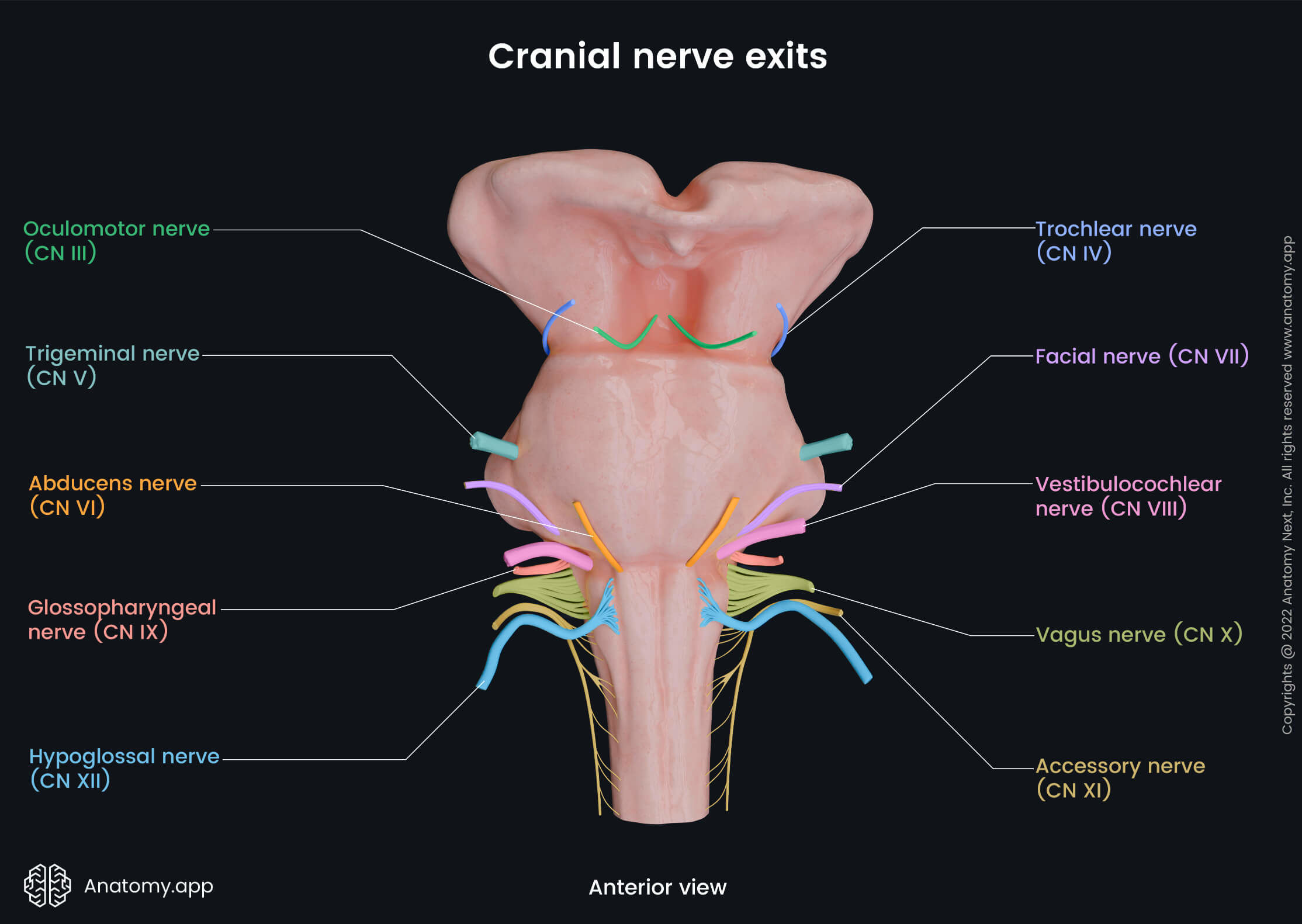Cranial nerves (overview)
The cranial nerves include 12 pairs of nerves, most of which are peripheral nerves emerging from the brain, mostly from the brainstem. These nerves are connected with sensory ganglia and parasympathetic ganglia (collections of neural cell bodies). And together, the cranial nerves and their ganglia represent the cranial part of the peripheral nervous system (PNS), providing the innervation for the anatomical structures located in the head, neck, thorax, and abdomen.
Each cranial nerve has been given a name. In addition, they are numbered sequentially with Roman numerals I to XII in the order in which they arise from the brain, front to back. Thus, often a cranial nerve is addressed to with the abbreviation "CN" and its respective number, for example, the facial nerve is also known as the seventh cranial nerve or CN VII.
All these nerves carry different types of information between the brain and the peripheral parts of the human body. If the information is carried from the brain to the periphery, it is known as the efferent or motor nerve, but if the information is carried in the opposite direction, it is an afferent or sensory nerve. Some cranial nerves contain both fibers, meaning they are mixed.
The following list presents the Roman numerals with the corresponding English names of the twelve cranial nerves:
- I - Olfactory nerve
- II - Optic nerve
- III - Oculomotor nerve
- IV - Trochlear nerve
- V - Trigeminal nerve, which divides into three parts or separate nerves:
- V1 - Ophthalmic nerve
- V2 - Maxillary nerve
- V3 - Mandibular nerve
- VI - Abducens nerve
- VII - Facial nerve
- VIII - Vestibulocochlear nerve
- IX - Glossopharyngeal nerve
- X - Vagus nerve
- XI - Accessory nerve
- XII - Hypoglossal nerve
Here is a mnemonic to help you memorize the sequence of the twelve cranial nerves:
Oh Oh Oh, To Touch And Feel Very Good Velvet, AH

Note that the actual fibers that represent olfactory nerves (CN I) cannot be seen in this model, instead you can identify structures that are connected with the CN I and form a part of the olfactory pathway - and these are the olfactory bulb and olfactory tract, which may be seen along the inferior surface of the frontal lobe (sometimes the olfactory tract remains in the cranial cavity when the brain is removed).
Besides the optic nerves (CN II), you may also identify the optic chiasm, where fibers of the optic nerves of the opposite sides intersect.
Also, notice that the trochlear nerve (CN IV) is the only cranial nerve that originates from the posterior (dorsal) side of the brainstem, more precisely, from the dorsal aspect of the midbrain.
The accessory nerve (CN XI) does not entirely come from the brain, as it also arises from the upper five segments of the cervical part of the spinal cord and enters the cranial cavity through the foramen magnum.
And the hypoglossal nerve (CN XII) originates from a set of rootlets ventral to those of CN IX/X.